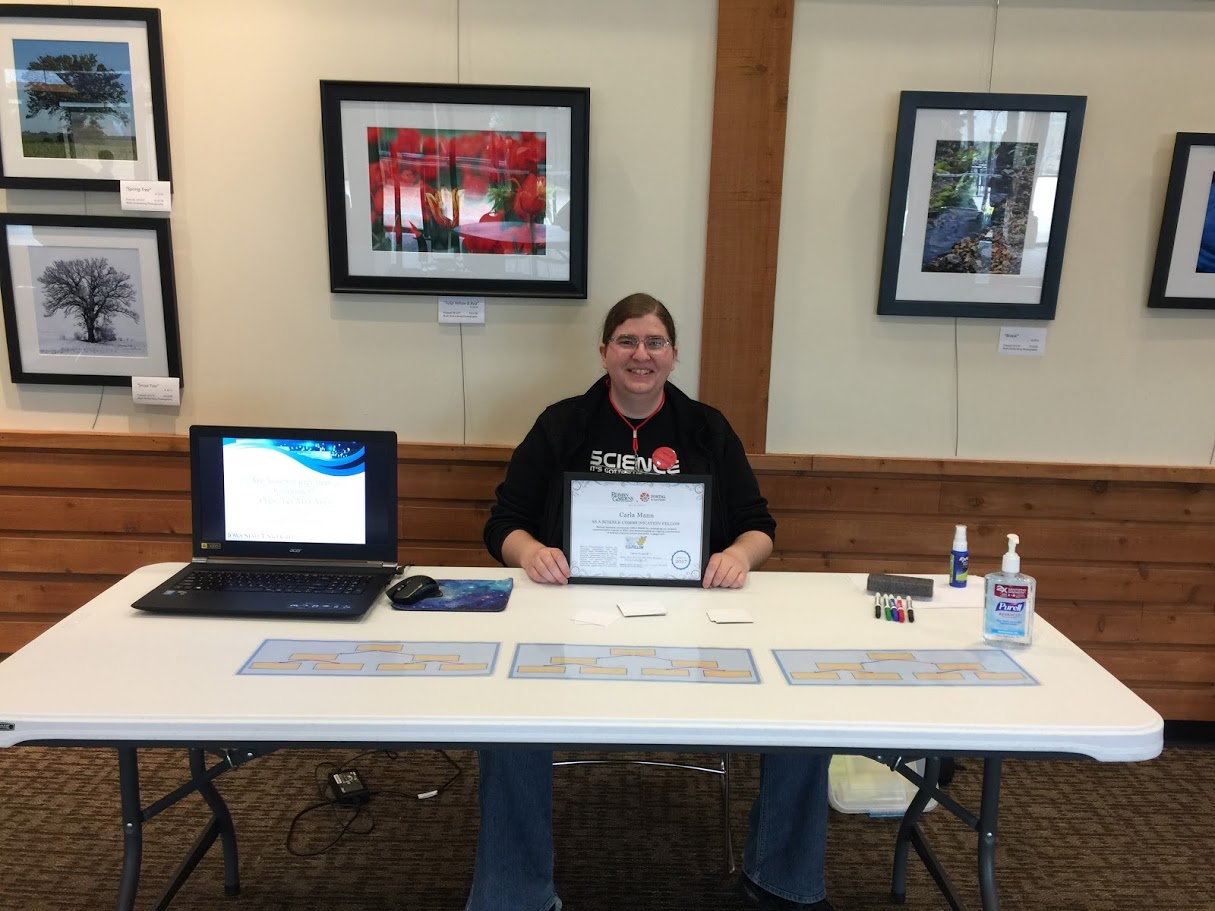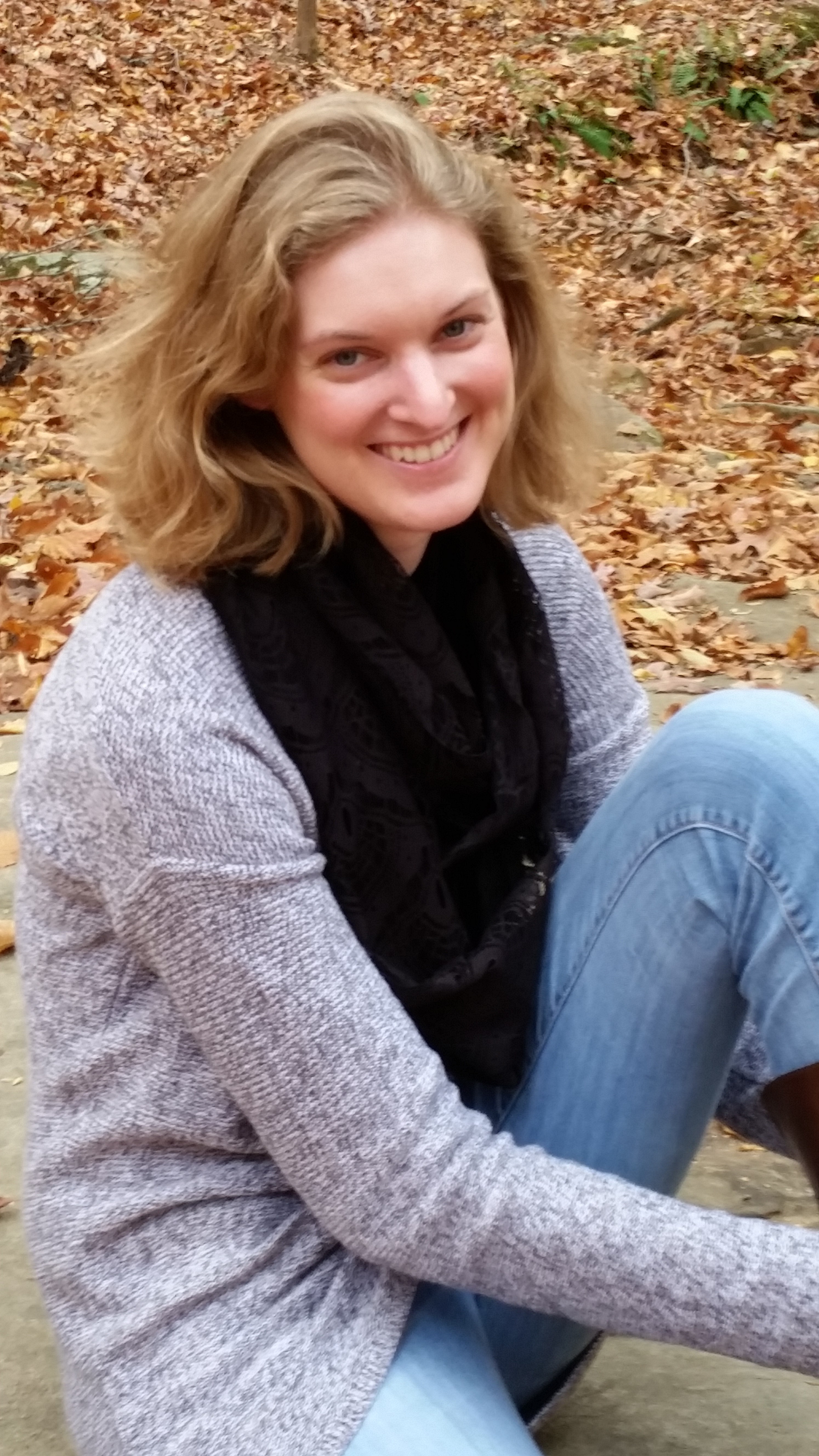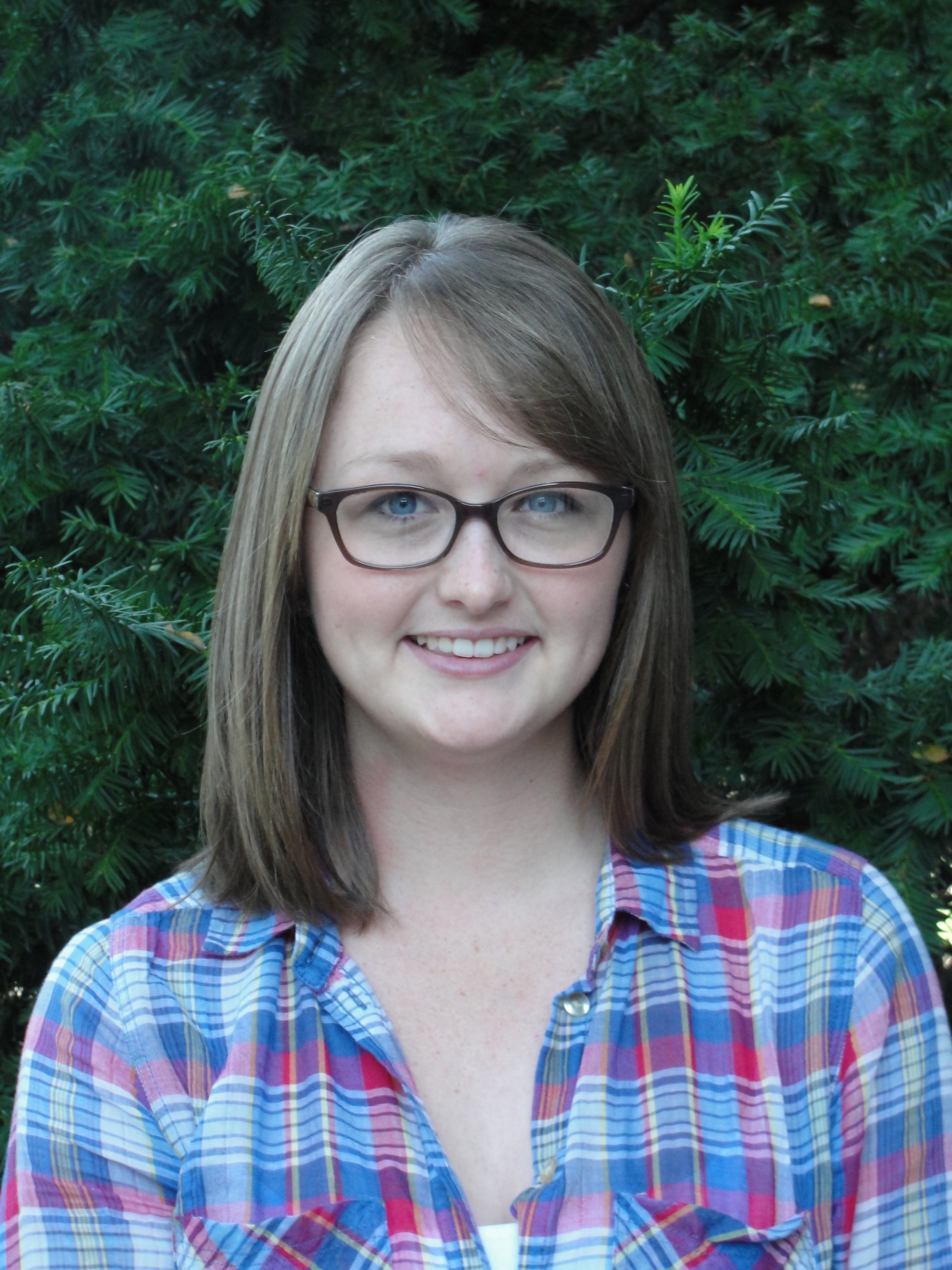
Scientific terms and concepts are part of a scientist’s everyday life, but to non-science folk, they can sound like a foreign language. To learn how to better communicate to a broader audience, three graduate students from the College of Liberal Arts and Sciences participated in a Science Communication Fellowship hosted by Reiman Gardens during the spring semester.
Sarah Pedersen and Emily Ernst, both graduate students in the Department of Ecology, Evolution, and Organismal Biology, and Carla Mann, a graduate student in the Department of Genetics, Development and Cell Biology and part of the interdisciplinary Bioinformatics and Computational Biology program, attended workshops and presentations to develop a hands-on activity related to their research to show its impact on the community and world.
The students participated in the Science Communication Fellowship, a free professional development program designed to enhance science communication skills through three workshops and a few public presentations. The Participants develop a hands-on activity related to their work in order to show its impact in an outreach setting. The fellowship is offered through Reiman Gardens, part of the Portal to the Public Network (PoPNet), a community of practitioners dedicated to sharing ideas and strategies for scientist-and-public engagement.
Carla Mann
Mann’s research: Proving people are still smarter than computers. To demonstrate machine learning, Mann created a “decision tree” showing the characteristics that humans can quickly identify to determine if an animal is a horse or not a horse. She said machines can use similar decision trees to also make this determination, and said these types of sorting methods are how Netflix or Amazon can find suggestions for you based on what you have bought already.
What she learned: Mann started thinking about science communication while trying to explain her research to younger siblings. The simpler explanations that worked for kids were also what worked best for adults not familiar with her field, she found.
"It should be required, if you’re going to be a scientist, to take a science communication course," Mann said.

Pedersen’s research: Corn and its wild ancestor. Pedersen digs into how both corn and the wild ancestor, teosinte, respond to climate change in order to understand how domestication may have affected corn’s adaptability.
What she learned: Remember to evaluate what is truly basic knowledge. What seems like basic knowledge to her may not be so basic to someone outside her field. She also learned to draw on her own experiences learning science and what methods she found engaging, which she can use to excite the next generation of scientists.

Ernst’s research: Invasive grasses in the desert southwest provide a continuous fuel bed that is able to spread fire to native shrubs that are not adapted to fire. Increased frequency or intensity of rain events can cause an increase in wildfires in an area that used to have very few due to the greater amount of germination of these grasses.
What she learned: Ernst created a game for children to show how this process happens. She said the fellowship helped her learn to use simpler language to explain the science of her research.